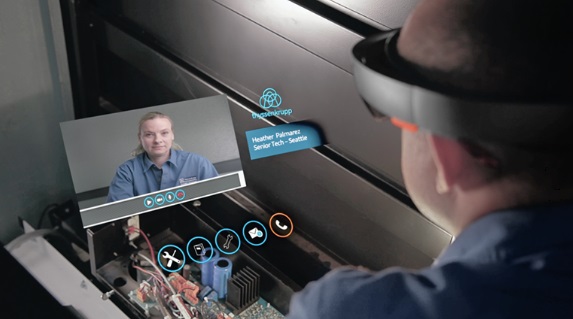Microsoft cloud chief: Our early IoT investment sets us apart from Amazon

It's become largely accepted by most industry watchers that the No. 1 and No. 2 players in the cloud are Amazon and Microsoft. Both offer infrastructure-as-a-service (IaaS) and platform-as-a-service (PaaS). Both share many higher-level services in common.

Given that landscape, what does Azure do better than Amazon's AWS?
That question was put to Scott Guthrie, Microsoft's executive vice president of Cloud and Enterprise, earlier this week at the Deutsche Bank Technology Conference.
Guthrie talked about Microsoft's hybrid approach to its cloud services as its biggest single differentiator, especially for enterprise customers. But he also mentioned Microsoft's early IoT investment as another.
"We invested very heavily in IoT early," Guthrie told conference attendees. "And so I mentioned like BMW, or Rolls-Royce, or GE, or some of the other IoT wins up there, sometimes when we're first to market in a particular category, whether it's IoT, our new Data Lake service that's coming out this Fall, we think will also be quite differentiated, BI is another area where I think we're quite differentiated."
(Note: Microsoft's Data Lake Analytics and Data Lake Store services are both still in preview. I'm guessing the preview tag comes off at Ignite, based on Guthrie's comments above.)
Microsoft has more than 120,000 new Azure subscriptions being created each month, Guthrie said. There are 1.6 million production databases now hosted in Azure, plus more than 2 trillion IoT messages each week. He added that there are more than 5 million organizations using Azure as their identity servers.
He said about 40 percent of Azure's overall revenue is coming from startups and software vendors at this point, and that Microsoft counts 4 million developers among its Azure customers.
Microsoft currently offers a number of Azure-hosted IoT services, including Azure IoT Hub for connecting, monitoring, and controlling the "things"; Event Hubs for telemetry; Stream Analytics for real-time data-stream processing; Machine Learning for predictive analytics and maintenance; and Notification Hubs.
Amazon made its own AWS IoT service generally available in December 2015 after launching it in pilot in October that year. Microsoft announced the core Azure IoT Suite in March 2015 and made it generally available in September 2015.
Microsoft seemingly has been working with some key IoT customers, like Thyssenkrupp Elevator, earlier than that, however.
Thyssenkrupp has been working with Microsoft since at least 2014 on elevator predictive maintenance and monitoring. In 2015, Thyssenkrupp took the wraps off MAX, its predictive maintenance technology built on Azure IoT Suite.
This week, Thyssenkrupp announced it planned to make Microsoft's HoloLens augmented-reality goggles available to its field-service technicians to help them in diagnosing and repairing elevator problems.
Going back to the topic of Microsoft's upcoming Ignite show, Guthrie also dropped some hints during his Deutsche Bank appearance that Microsoft's field-programmable gate-array (FPGA) work would get some time in the spotlight.
"We've talked about our ability to do programmable hardware inside Azure and the fact that we use what's called FPGA processors inside our fleet now and that starts to enable us to do algorithms for whether it's healthcare, whether it's for financials, whether it's for other spaces where we can dramatically by like orders of magnitude shrink down the time or cost it takes to solve something," he noted.
"That would be an example of where just cost effectively there's no way you could do that with 10,000 servers. You really need to be able to have a fleet of millions in order to justify that level of investment," Guthrie said.
Microsoft already has been using FPGAs to handle Bing indexing on a limited basis, which was a project codenamed Catapult. But the company also started to use SmartNICs to offload complex functionality, such as crypto, storage acceleration, and quality of service tasks, onto FPGAs, saving the CPU in its servers. This is likely the Catapult 2.0 project, codenamed Pike's Peak.